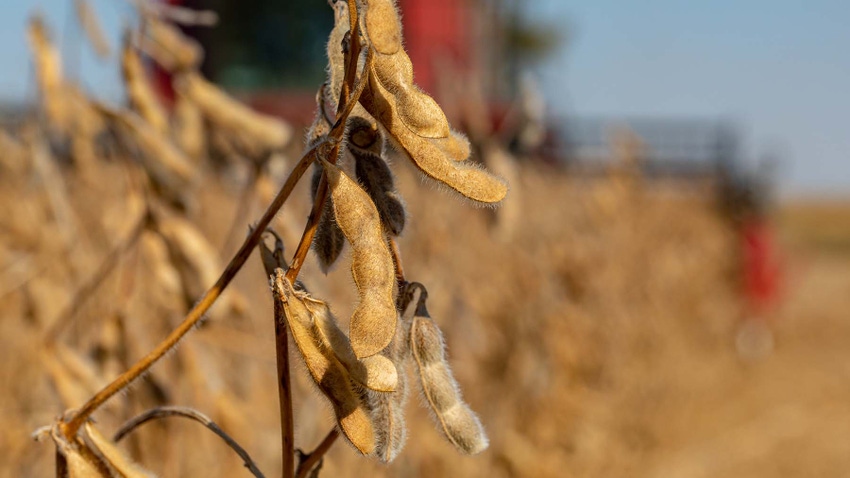
Once a year, USDA’s World Ag Outlook Board publishes its Baseline Projections report, which is meant to be a long-term look at supply and demand dynamics for the U.S. food system. The WAOB released its preliminary tables to the public on Tuesday.
The purpose of this report is largely to appease budget planners ahead of the Congressional Budget Office’s annual budget review taking place this week. The CBO is required by law to project out current legislation policies over a 10-year period.
Some market watchers become pretty invested in these reports as far as what they mean for corn/soybean/wheat prices based on projected acreage outlays. And I’ll admit – I frequently use the Baseline Projections’ trendline yields for our teams’ acreage estimates.
But anyone (specifically anyone whose compensation is tied to budget variances) who has spent time working with budgets knows that they are simply guidelines for what could happen under a narrow set of assumptions and are often scrapped (sometimes mercifully) as market conditions change.
These Baseline Projections should be viewed with that same mindset. They are certainly an interesting look into an uncertain future, but due to the uncertain nature of the future, they should not be taken as law. What we should be more concerned with is the long-term trends USDA is anticipating.
And that will be the highlight of this morning’s report. I’ll sprinkle in my observations about USDA’s long-term trends here for your reading pleasure this morning.
Remember – this is the preliminary report. The final report will be published in February 2024. The estimates observed are based on market conditions as of the publication of the October 2023 World Agricultural Supply and Demand Estimates (WASDE) report published last month.
Report assumptions
This report assumes normal weather conditions and trendline yields. It does not account for unforeseen market events that may shift global and domestic market dynamics. It also keeps its assumptions consistent with EPA policies regarding biofuels.
Remember, these figures are not meant to provide any market certainty about what farmers will or will not do in the coming years. They are primarily for Congressional budget planning purposes and should be interpreted accordingly.
The shrinking acreage outlay
USDA expects that given current price conditions, farmers will plant less corn in the coming years in favor of more soybean acres. In fact, as time progresses it seems highly likely that corn and soybean acreages will grow to fairly equal one-to-one ratios of each other.
In 2024/23, USDA is forecasting planted corn area at 91.0 million acres, a 4% decline from this year’s estimated planted acreage of 94.9 million acres. Those acres will be directly moved into 2024 soybean acreage, which is expected to experience 4% growth from this year’s sowings of 83.6 million acres and grow to 87.0 million acres.
Total wheat acres are likely to decline in 2024/25 amidst weak wheat prices this past fall following bigger-than-expected 2023 U.S. soft red winter wheat crops and rapid shipments out of Russia and Ukraine. Following nearly 49.6 million acres of wheat planted last season, USDA expects 2024/25 wheat acreage to fall 3% to 48.0 million acres. Over the next decade, that acreage expectation will drop to 45.5 million – 46.0 million acres.
As yields rise over the next decade, acreages for the three primary crops – corn, soybeans, and wheat – will likely fall to keep prices in balance. Some acres will likely be lost to urban sprawl along the way also.
Ultimately, as the U.S. renewable diesel sector expands and the livestock herd remains small, corn and soybean acres will eventually trend closer to one another. And as the U.S. passes the corn and soybean export crown off to Brazil, those acres will become more dependent upon domestic end usage rates rather than international demand.
Soybean crush expansion
With yet another announcement of a new crush plant from Louis Dreyfus a couple weeks back, markets remain interested in the future of domestic soybean processing. While much of the new growth is expected to come online in the current 2023/24 marketing year, USDA also forecasts rapid crush expansion from now until the 2026/27 marketing year.
Growth for crush forecasts begins to flatten in the years after that point. And this tracks with commonly accepted market logic – the U.S. EPA has only offered blending mandates for renewable diesel, which is being primarily fed by soybean oil, up to the 2026/27 marketing year.
Since USDA relies on the EPA mandates for its forecast and the renewable diesel industry is not yet profitable without the support of the blending mandates, it makes sense that USDA erred on the conservative side and only forecasted out the known expansion that will be supported by the EPA’s blending volumes currently in place.
Regardless, the crush growth forecasted in the Baseline Projections report is impressive. Over the next 10 years, U.S. crush volumes will grow a staggering 14% - double the growth rate of export volumes during that period.
The U.S. ceded the title of world’s largest soybean exporter to Brazil in 2012. But as more domestic crush infrastructure is developed in the U.S., the export market will likely play less of a role in U.S. soybean pricing. For farmers, that is great news as it means that more value from locally produced soybeans will be kept closer to home and will continue to turn over in rural communities for far longer than exports can.
The corn consumption saga
Corn usage has been high on my watch list this fall, and the insights gleaned from the Baseline Projections report substantiated some of my suspicions. First, USDA is expecting food, seed, and industrial (FSI) consumption of corn to remain flat to slightly lower over the next decade. This figure also includes corn consumption for ethanol.
We know that the EPA is forecasting flat volumes for ethanol blending into gasoline between now and 2026 (15 billion – 15.25 billion gallons/year). The WAOB anticipates that corn consumption for ethanol will peak at 5.325 billion bushels/year between 2026/27 – 2028/29. But after that time, usage will remain flat to 0.5% lower per year as more electric vehicles populate the road.
But that doesn’t mean all hope is lost for domestic corn usage. Livestock feed and residual corn usage is forecast to rise 3.6% next year, with average increases of 1.8% every year after through the next decade. Those returns aren’t likely to beat the S&P 500, but they do offer some optimism about beef herd rebuilding in the years to come.
The other source of end user optimism as corn crops grow larger amidst larger yields? The export market. Next year’s corn crop will be slightly smaller than this year’s, but growing stocks and flat FSI growth mean that there will be 1.2% more corn available for export in the 2024/25 marketing year.
Exports are likely to fill out the balance sheet as crop sizes grow. USDA estimates an annual average of 2.2% growth in annual corn export volumes over the upcoming nine years. This will likely depend heavily on South American export trends, as the U.S. increasingly finds itself as a secondary global corn supplier amid cheaper Brazilian exportable surpluses.
Moderated production costs ahead
USDA also projects variable costs for corn production throughout the next decade. On a per acre basis, 2023/24 corn production is forecasted at $470/acre. That figure is down substantially from $517/acre last year.
But there is good news – over the next 10 years, USDA expects that the cost of corn production per year will average out to $434/acre. That is a much more affordable price at which to produce corn and it could help ease farmer worries about rising costs and sticky inflationary pressures.
Corn prices will continue lower as production capabilities expand. USDA quotes $4.95/bushel for the 2023/24 average farm price, $4.50/bushel in 2024/25, and $4.30/bushel in the following years that comprise the next decade.
Similarly, expenses for soybeans will continue lower, falling from $386/acre during the 2023/24 marketing year to an average of $329/acre/year over the next decade. Expectations for larger soybean crops will push prices down from current levels – from $12.90/bushel expected this year to $11.30/bushel in 2024, $10.75/bushel in 2025, and $10.50/bushel in the eight subsequent marketing years.
Lower nitrogen costs for wheat production expected in upcoming years will also reduce farmgate costs. Variable wheat production costs are forecast at $187/acre in 2023/24, dropping down to $175/acre in 2024 and $173/acre in 2025.
Wheat production will likely hold steady between 1.8 – 2.0 billion bushels per year over the next decade, which will send prices down from $7.30/bushel in 2023/24, to $6.80/bushel in 2024, $6.30/bushel in in 2025, and $6.00/bushel in the following eight years.
About the Author(s)
You May Also Like






